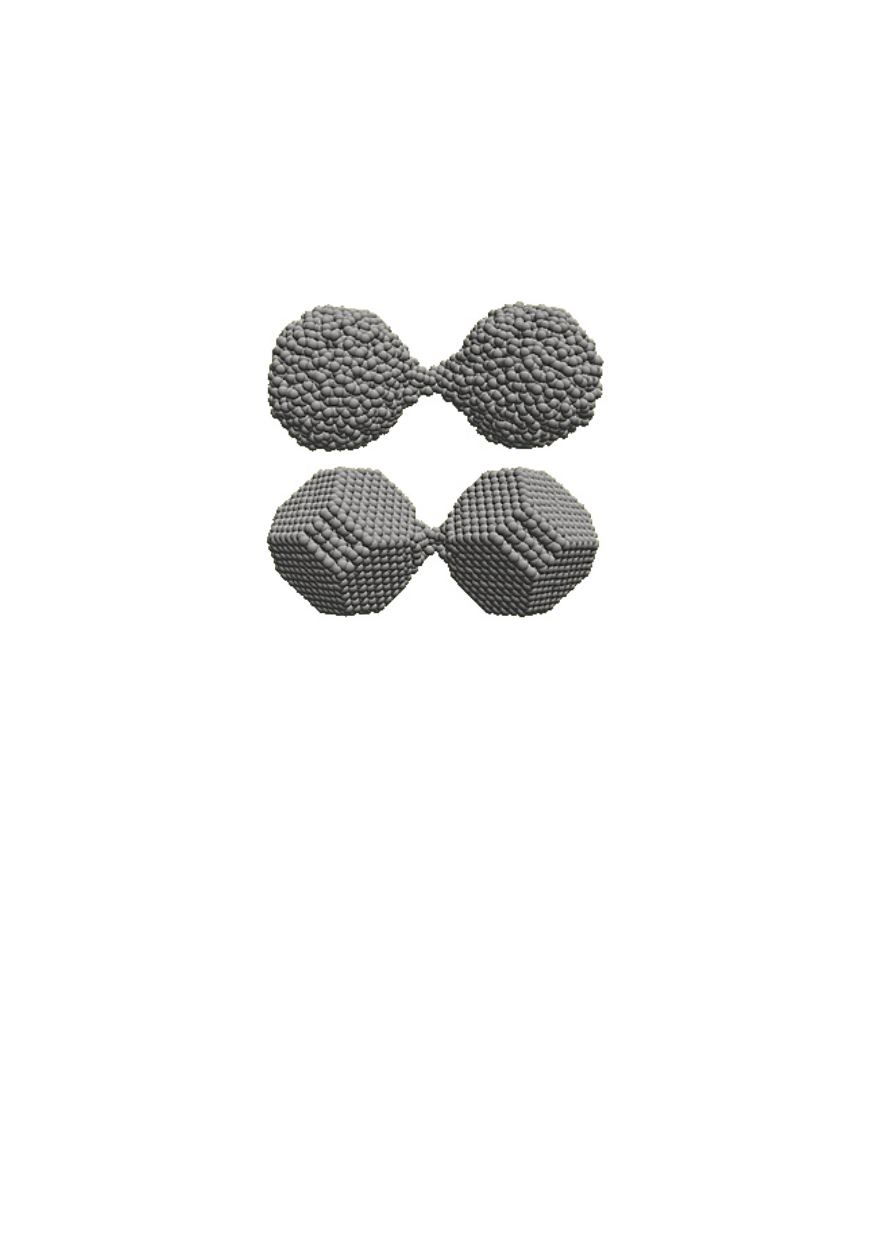

343
beyond the point that would be predicted using its bulk-scale properties. Hawa, Henz and
Zachariah’s simulations reaffirmed their study and added some additional details. They
showed that both nanoparticle size and morphology, whether the material is basically
crystalline or amorphous, for example, have an effect on the observed ductility and
tensile strength because those factors influence the mobility of surface atoms. In the
simulations, the smaller the particles in the aggregate the more ductile the material
behaved. Crystalline structures exhibited greater strength when stressed and deformed
long after the critical yield point observed macroscopically.
Figure 24. NIST researchers have shown that silica that are brittle in bulk exhibit
ductile behaviour at the nanoscale. Computer simulations demonstrate the material
extension and necking that occurs during the separation of amorphous (top) and
crystalline (bottom) silica nanoparticles /26/
9. DISCUSSION AND CONCLUSSION
To understand better the approaches to damage and failure of structure as important
for structural integrity, and their eventual application at nano scale, four key words
require some consideration. These words are structure, integrity, crack and fracture.
Structure
is considered here as a composition designed and produced for requested
purpose and use. It has to save the
integrity
during designed life even in the case of
present defect, in the most danger form as a
crack
, which is considered as the locally
separated material. Process of
fracture
is characterized by growing crack. Since the crack
is considered as void area with boundary, its tip exists as a singularity, and for that tip is
not a key word, although the region ahead the crack tip is of prime interest for fracture
development. These definitions, apt to critic and open to comments, are accepted as a
convention. Two remarks can be given here.
1. Initially, the discipline treating the crack was called Crack Mechanics, what is
changed in Fracture Mechanics (FM).
2. When European Group of Fracture (EGF) changed its name, the form with more
positive implication has been accepted – European Structural Integrity Society (ESIS).


















